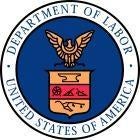Napa County, California recently experienced a 6.1 magnitude earthquake with multiple aftershocks – the largest earthquake in the region in 25 years. Earthquakes can occur at any time with no warning, so it is important to maintain constant preparedness. While nothing can prevent earthquakes from occurring, there are things we can do to minimize the harm done and stay safe during and following the earthquake – be ready and have a plan!

A historic example of the damage an earthquake can cause.
Proper planning prior to an earthquake includes developing an emergency action plan, maintaining an emergency supplies kit, and picking safe places, such as a study desk or table away from windows, for immediate shelter. Communicating the plan to all workers and providing training is vital in ensuring that everyone instinctively knows what to do in the event of an earthquake.
Earthquakes can lead to significant structural damage and falling debris can lead to serious injuries or even fatalities. It is important to remember what to do to protect yourself during an earthquake – drop, cover, and hold on!
The potential dangers, however, don’t end when the Earth stops shaking.
Some of the dangers workers may encounter following an earthquake include: being struck by falling objects due to structural damage, burns resulting from building fires resulting from gas leaks or damaged electrical wiring, and exposure to chemicals released from stored or process chemicals.
Many of the dangers to workers both during and following an earthquake are predictable and may be reduced by identifying potential safety and health hazards and planning how to reduce or eliminate the hazards. It is important to take proper steps before entering structures and only trained personnel should be involved in search and rescue or demolition and cleanup operations.
Learn all about earthquake preparedness, as well as general precautions and guidance on potential hazards following earthquakes at OSHA’s Earthquake Preparedness and Response webpage.
Mandy Edens is the director of OSHA’s Directorate of Technical Support and Emergency Management.


 />i
/>i

